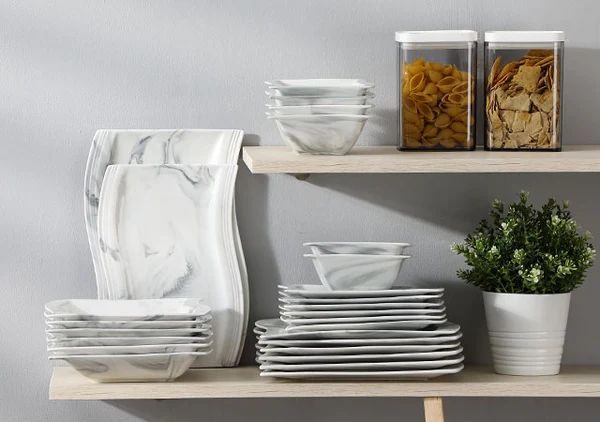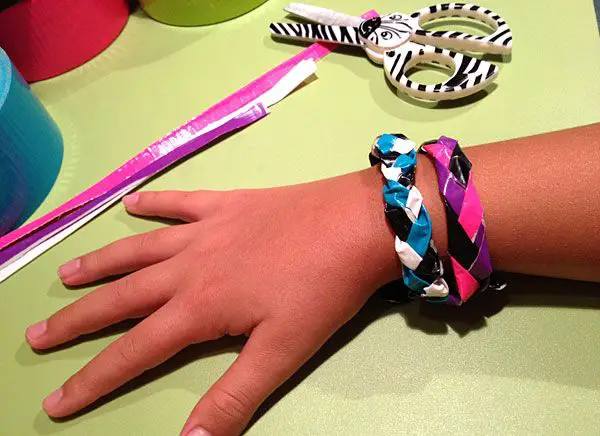What Are The Disadvantages Of Stoneware?
What is Stoneware?
Stoneware is a type of vitrified or semi-vitrified ceramic made from clay that is fired at high temperatures, typically between 2,100°F and 2,400°F. The high firing temperatures make the clay melt, which causes the clay particles to fuse together, making stoneware non-porous and relatively impermeable to water (Source).
There are several different types of stoneware clays that are used to produce various stoneware items:
- Ball clay – Fires to a light color and is very plastic and gives strength and elasticity to stoneware bodies.
- Fire clay – Withstands high temperatures and has high levels of alumina and silica.
- Kaolin – Provides whiteness and plasticity.
- Feldspar – Lowers maturation temperature.
Some common uses for stoneware include:
- Dinnerware – Plates, bowls, mugs, etc.
- Storage containers – Jars, crocks, jugs.
- Artistic items – Figurines, vases, decorative pieces.
- Outdoor pottery – Planters, urns, yard art.
Durability Issues
Despite being a durable material, stoneware is still prone to chipping and cracking over time, especially if subjected to sudden temperature changes or impact. According to The Little Pot Company, stoneware can chip or crack if cooled too rapidly after heating. Dropping stoneware dishes or pots can also cause chips and cracks. While stoneware is durable, it is not as impervious to damage as materials like porcelain.
Compared to porcelain dinnerware, stoneware is generally considered less durable and prone to more chipping with repeated use and washing, according to Because Mom Says. The clay body of porcelain is denser and less porous than stoneware, making it more resistant to damage over time. So while stoneware is durable, it does not match porcelain in chip resistance and durability for dishes and serving ware used on a daily basis.
Heating Limitations
One of the main disadvantages of stoneware is that it cannot withstand extremely high temperatures. Stoneware is typically fired at temperatures between 2,124°F and 2,264°F (1,162°C and 1,240°C) according to sources like this guide. While stoneware can withstand high heat in the kiln, it cannot tolerate the rapid temperature changes of stovetop cooking.
Stoneware’s porosity makes it prone to cracking if exposed to sudden temperature shocks. Putting stoneware cookware on the stovetop or moving it between very hot and cold environments can cause cracks or breaks. For this reason, most stoneware dishware like mugs, bowls, and plates are not suitable for stovetop cooking. Stoneware cookware requires gradual preheating and cooling to prevent thermal shock damage.
Porosity
Stoneware is more porous than porcelain. Porcelain is extremely non-porous, while stoneware can have porosity levels from 5-10% (Ceramic Arts Daily). This can be a disadvantage because it means stoneware can absorb liquids and potentially stain if not sealed properly (Digitalfire). Due to its slightly porous nature, stoneware requires regular sealing to prevent staining, whereas porcelain does not require sealing.
Weight
One downside of stoneware is that it tends to be quite heavy compared to other ceramics like porcelain. The dense nature of stoneware makes pieces thick and hefty. For example, a 1 gallon stoneware crock can weigh over 7 pounds when empty.

This heavy weight makes stoneware difficult to lift and transport. Moving or shipping stoneware pieces can be cumbersome due to their heft. The weight also makes stoneware prone to breaking if dropped. So the heavy density, while durable, also makes stoneware vessels less portable and more fragile in some situations.
Limited Styles
One disadvantage of stoneware is that it offers fewer shape and design options compared to other materials like porcelain or bone china. Stoneware tends to have a simple, rustic aesthetic rather than the elaborate patterns and delicate details that can be achieved with finer ceramics.
The clay used for stoneware is quite thick and dense, making it difficult to produce the thin walls and intricate shapes possible with porcelain. The firing process also leads to a certain roughness and irregularity in the final product, limiting the refinement of the pieces.
So for those desiring a formal tableware set with lots of delicate cups and saucers, or decorative objects with intricate sculptural details, stoneware may not allow for the level of artistry and sophistication that some prefer. The simple, chunky shapes and thicker walls of stoneware can seem unsophisticated or rustic to some.
Stoneware lends itself better to basic, utilitarian designs like thick mugs, hearty serving bowls, and casual bakeware. The range of styles is narrower compared to porcelain and bone china, which offer greater versatility for both decorative and functional ceramics.
Cost
Stoneware is typically less expensive than porcelain.
This is because stoneware is made from coarser clay particles and fired at a lower temperature than porcelain (Stoneware vs Ceramic: Everything You Need to Know, 2024). Stoneware clay requires less processing and energy to fire than the extremely refined kaolin clay used in porcelain (Stoneware Clay Vs. Porcelain Clay: Details & Facts, 2024) .
However, stoneware is generally more expensive than earthenware ceramics made from low-fire clays (Stoneware vs Ceramic: Which is Better?, 2023). Earthenware uses the least refined clays and can be fired at lower temperatures than stoneware, keeping production costs lower.
Lower Resale Value
Stoneware tends to have a lower resale value compared to other materials like porcelain or bone china. Unlike antiques made from finer materials, stoneware does not usually increase in value over time and is not generally considered a collectible item.
This is because stoneware is seen as more utilitarian and ordinary, rather than a rarer and more precious material. While some very old or unusual examples of stoneware can have value to collectors, most standard stoneware pieces have a resale value of just $15-25 according to antique appraisers (Source).
This lower resale value is something to keep in mind if you are concerned about the long-term value and want dishes or tableware that may appreciate. Stoneware is less of an investment compared to antique porcelain or china.
Sourcing Concerns
One disadvantage of stoneware is the limited options for ethical and sustainable sourcing. Much of the stoneware available today is mass-produced overseas in countries like China and Portugal, often under questionable labor conditions [1]. While stoneware can last a long time if cared for properly, the overseas manufacturing and long-distance shipping raise environmental concerns.
Eco-conscious consumers looking for ethical and sustainable dinnerware may have difficulty finding stoneware options that align with their values. There are a handful of small-batch stoneware makers focused on local sourcing and production [2], but they can be hard to find and quite expensive compared to mass-market brands. With increased consumer demand for ethical products, hopefully more eco-friendly stoneware options will emerge.
Alternatives to Consider
Though stoneware offers some benefits like durability, there are good alternatives to consider for certain uses:
Porcelain is an excellent alternative for dinnerware and cookware. Porcelain is highly resistant to chipping, staining, and thermal shock. It is smooth, non-porous, and lighter than stoneware. Some examples of porcelain dinnerware brands are Royal Doulton, Wedgwood, and Royal Albert.
For ovenware and baking dishes, glass, ceramic, and glazed earthenware can be good stoneware alternatives. Brands like Pyrex and CorningWare make durable glass bakeware that allows for excellent heat conductivity and visibility of the food while cooking. Quality earthenware brands like Le Creuset and Staub produce enameled cast iron cookware that distributes and retains heat effectively.
For more utilitarian pieces like jars and planters, standard earthenware can substitute stoneware in many instances. Unglazed earthenware, like terracotta, allows moisture to evaporate through the porous material which can be useful for plants. Earthenware is cheaper and easier to source than stoneware.

